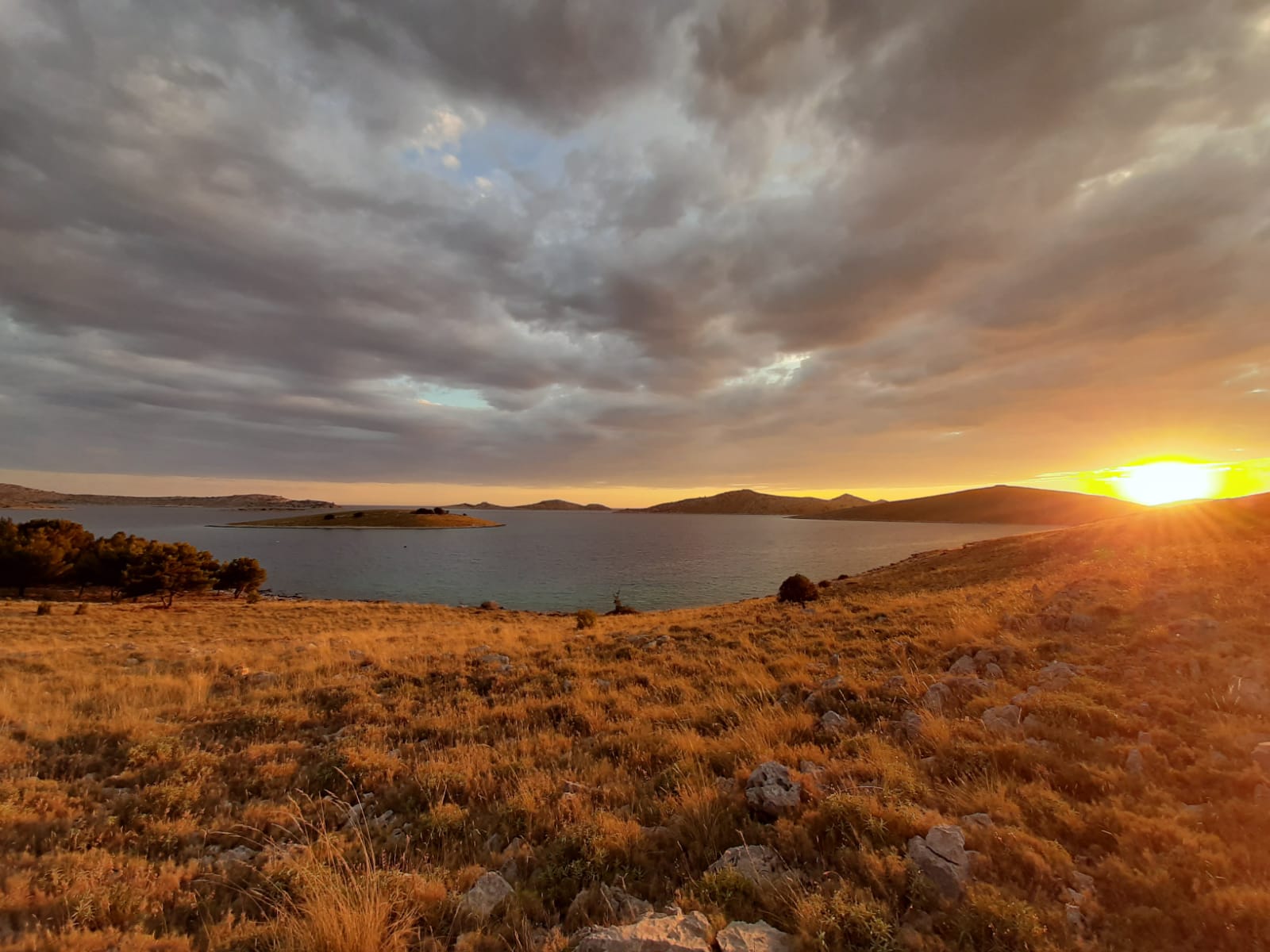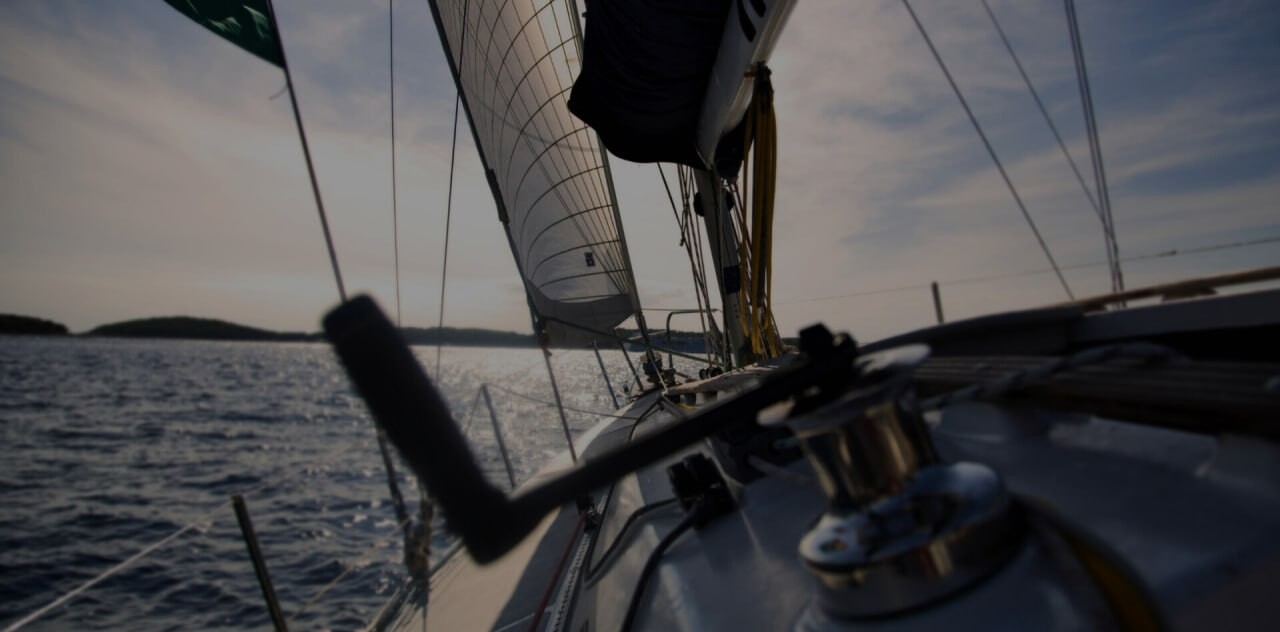Kornat

Kornat Island – A Sailing Guide to Croatia’s Raw Beauty in the Kornati Archipelago
Tucked within the heart of the Kornati National Park, Kornat Island is the largest and most iconic isle in this breathtaking archipelago of 89 scattered islands and islets. Known for its rugged coastline, serene anchorages, and crystal-clear waters, Kornat is a must-visit destination for sailing enthusiasts chartering a yacht along Croatia’s Dalmatian coast. Whether you're looking for secluded bays, rustic konobas, or dramatic sea cliffs, Kornat offers an unforgettable maritime experience that combines untouched nature, tranquility, and authentic Adriatic charm.
Where Is Kornat Island and Why Sail There?
Kornat Island lies in northern Dalmatia, roughly between Zadar and Šibenik, and is part of the Kornati National Park. The island is uninhabited but holds immense historical, geological, and ecological significance. With no urban development, paved roads, or resorts, Kornat offers a rare glimpse into an Adriatic that feels frozen in time.
Sailors are drawn to Kornat for its dramatic karst landscape, endless blue horizon, and a sense of remoteness that’s increasingly rare in the Mediterranean. The island’s strategic location also makes it an ideal stop when cruising through the central Adriatic, connecting destinations like Dugi Otok, Žut, Murter, and Telašćica Nature Park.
How to Get to Kornat Island by Sailboat
Kornat is accessible only by boat, making it perfect for those chartering yachts from nearby marinas in Biograd na Moru, Zadar, Murter, or Šibenik. Most sailors enter the Kornati National Park from the northern or southern gates, with Levrnaka and Vrulje on Kornat being popular first stops.
If you're sailing from the north, you’ll likely enter near Opat or the Proversa Mala and Proversa Vela channels. From the south, the approach is usually via Vrata od Opata or the Šibenik Channel. National Park entrance fees apply, and they’re best purchased in advance online or through local agents to avoid extra charges on-site.
The Unique Geography of Kornat Island
Kornat stretches approximately 25 kilometers in length and is distinguished by its elongated, narrow shape with a deeply indented coastline on its western side. Its most dramatic natural features are the vertical cliffs or “crowns” (krune), which drop steeply into the sea along the island’s outer, western edge. Some of these cliffs, such as those near the southern tip at Opat, reach up to 80 meters in height and offer a thrilling sight from the deck of a sailboat.
Inland, the landscape is marked by dry stone walls, fig trees, olive groves, and ancient sheep pens, remnants of traditional island life maintained by residents of nearby islands like Murter. The scarcity of vegetation and fresh water only adds to Kornat’s stark, haunting beauty.
Best Anchorages Around Kornat Island
One of the highlights of sailing around Kornat is the number of calm, protected bays that offer excellent anchorages for overnight stays or day visits.
Vrulje Bay is the island’s most well-known anchorage. Located on the northeastern coast, Vrulje offers good shelter from most winds except strong bura. Mooring buoys are available, and there are a few konobas nearby where you can enjoy grilled fish and local wine.
Opat Bay, located at the southern end of the island, is another favorite. The deep inlet provides protection from southerly winds and offers a wild and remote ambiance. There’s a family-run konoba where you can enjoy a rustic seafood dinner under the stars.
Šipnate Bay is an excellent stop on the island’s eastern coast. It features a long indentation and is sheltered from the north and east. The crystal-clear shallows are ideal for swimming, and the nearby Konoba Šipnate is known for serving fresh, locally sourced cuisine.
Stiniva Bay (not to be confused with the one on Vis) is another peaceful spot on the eastern side of Kornat. Surrounded by high cliffs and accessible only by sea, it offers a magical, secluded anchorage perfect for relaxing afternoons.
Sailing Conditions Around Kornat
Sailing around Kornat is relatively straightforward for experienced crews, but attention must be paid to weather changes, especially the bora wind (bura), which can sweep through the area with little warning. The summer Maestral is more predictable and usually blows from the northwest, making for excellent sailing conditions in the afternoon.
Navigation is generally safe, though some of the passages between islands are narrow and may have rocks or reefs, so up-to-date charts and plotters are essential. The Kornati area is sparsely populated, and rescue or harbor services are limited, so proper provisioning and planning are crucial before heading into the park.
Konobas and Local Cuisine on Kornat Island
Despite its lack of permanent population, Kornat is home to several family-run konobas that operate during the sailing season, mostly from May to October. These traditional Croatian taverns are a cornerstone of the Kornati experience, offering freshly grilled fish, octopus peka, lamb, homemade wine, and the warm hospitality of islanders who maintain deep-rooted ties to the land.
Konoba Opat is one of the most famous on the island, located in the southern part. With its terrace perched above a small bay, it’s known for serving fresh Adriatic lobster, scampi buzara, and wild fish caught the same day. Mooring buoys are available for guests.
Konoba Ante Vrulje, near the Vrulje anchorage, is a great spot for enjoying simple but delicious Dalmatian dishes. Think anchovies in olive oil, black cuttlefish risotto, and grilled seabream.
Konoba Suha Punta, located near the northern end of Kornat, is often recommended for its authentic atmosphere and sunset views. Local wines, cheeses, and peka dishes here are a treat after a day of sailing.
Snorkeling and Swimming Spots
Kornat’s underwater world is as captivating as its cliffs. Many of the island’s bays feature clear turquoise waters, rocky sea beds, and thriving marine life, making them ideal for snorkeling and diving. Common sights include octopus, sea urchins, damselfish, and even the occasional dolphin pod passing through the channels.
The southern cliffs are a hotspot for free diving and underwater photography, where the vertical drops continue beneath the waves. Snorkelers will enjoy exploring the pebble coves in bays like Šipnate, Strižnja, and Lupeška.
Hiking Trails and Viewpoints
Though the terrain is arid and rugged, Kornat is crisscrossed with old shepherd paths and trails ideal for short hikes. One of the most spectacular viewpoints is Metlina Hill, the highest point on Kornat (237 meters), offering a panoramic view of the entire Kornati Archipelago. From here, you can see the maze of islands stretching to the horizon and appreciate the stark contrast between the green mainland and Kornat’s barren grandeur.
The trail to Metlina begins near Vrulje and takes about an hour to reach the summit. Along the way, you’ll pass traditional dry stone walls and remnants of ancient dwellings.
Cultural and Historical Legacy
Though uninhabited today, Kornat Island has a rich human history. Archaeological evidence suggests Roman and even earlier settlements. Ruins of ancient houses, cisterns, and small chapels still dot the landscape. The Church of Our Lady of Tarac, near the Tarac Bay, is a 17th-century chapel built on the ruins of an early Christian basilica, and is still used for an annual pilgrimage from Murter on the first Sunday in July.
Nearby is Tureta Fortress, a Byzantine military outpost from the 6th century, thought to have been built to secure maritime routes. The fortress offers stunning views and is one of the rare signs of once-strategic importance in this now-peaceful seascape.
National Park Rules and Fees
Since Kornat Island is part of the Kornati National Park, sailors must observe certain regulations. You’ll need to purchase a valid park ticket per vessel, based on boat length. Daily tickets can be bought in advance for a reduced rate, and multi-day options are also available. Fishing is strictly regulated and allowed only in designated zones with permits.
Anchoring is permitted in certain bays, but mooring buoys are encouraged to protect the fragile seabed. Fires and barbecues are prohibited, and waste disposal must be managed carefully - there are no facilities for waste collection on the island.
Wildlife and Flora
While Kornat’s arid appearance may seem barren, the island supports a surprising range of life. Olive trees, figs, wild herbs like sage and rosemary, and endemic grasses paint subtle patterns across the island. Birds such as shearwaters, gulls, and peregrine falcons nest on the cliffs, while the waters teem with fish, crabs, and starfish.
Occasionally, endangered species like the monk seal have been spotted in the quieter coves. The ecosystem is fragile, and conservation efforts aim to preserve the island’s natural beauty for future generations.
Nearby Islands to Visit
When sailing around Kornat, consider exploring nearby highlights within the Kornati Archipelago:
Levrnaka Island – Home to the popular Lojena Beach, one of the few sandy beaches in the park.
Žut Island – A contrast to Kornat with a bustling marina and several lively restaurants.
Ravni Žakan and Piškera – Both offer well-maintained marinas with essential services and lovely dining spots.
Mana Island – Known for its dramatic cliffs and ruins of a film set, often visited for hiking and photography.
Best Time to Sail to Kornat
The sailing season in Kornat runs from late April to October. July and August bring warm weather, calm seas, and long daylight hours but also more boats and higher prices. For a quieter experience, consider visiting in late May, June, or September, when the weather is still favorable and the anchorages are less crowded.
Essential Tips for Sailing to Kornat Island
Provision well: There are no shops or fresh water sources on Kornat.
Respect nature: Follow all national park rules to protect the fragile ecosystem.
Plan for anchorage: Use official mooring buoys whenever possible.
Book konobas early: In peak season, reservations are often required, and they may only serve guests who arrive by boat.
Stay weather-aware: Especially during shoulder seasons, check wind forecasts regularly.
Conclusion – Kornat Island, a Sailor’s Sanctuary
For those seeking a raw, authentic experience of the Adriatic, Kornat Island offers unmatched serenity, spectacular natural features, and an invitation to slow down and reconnect with the sea. Whether you’re anchoring beneath towering cliffs, hiking to ancient fortresses, or enjoying grilled fish at a seaside konoba, Kornat will etch itself into your sailing memories. It's more than a destination - it's a voyage back to the essence of Dalmatia.
For a tailor-made sailing itinerary including Kornat and the Kornati Archipelago, consider reaching out to Navigare Solutions, a trusted provider of unforgettable yacht charters across Croatia.

Kornati sailing trips
Set Sail Through the Kornati Islands – Discover Croatia’s Sailing Paradise
Experience the untamed beauty of the Kornati Archipelago, where 89 scattered islands, islets, and reefs form one of the most breathtaking sailing grounds in the Adriatic Sea. A Kornati sailing trip invites you to navigate a maze of pristine coves, dramatic limestone cliffs, and quiet anchorages in the heart of Kornati National Park. Whether you're cruising past towering sea walls on Kornat Island, snorkeling in translucent bays, or dining at a remote konoba under the stars, this voyage is all about pure connection with nature and the sea.
Perfect for adventurous sailors, nature lovers, and those seeking solitude far from crowded ports, a Kornati sailing holiday delivers both wild seclusion and authentic Dalmatian hospitality. Charter a yacht from nearby Zadar, Šibenik, Murter, or Vinišće and immerse yourself in the raw, rugged magic of one of Europe’s most spectacular sailing destinations.
Send request